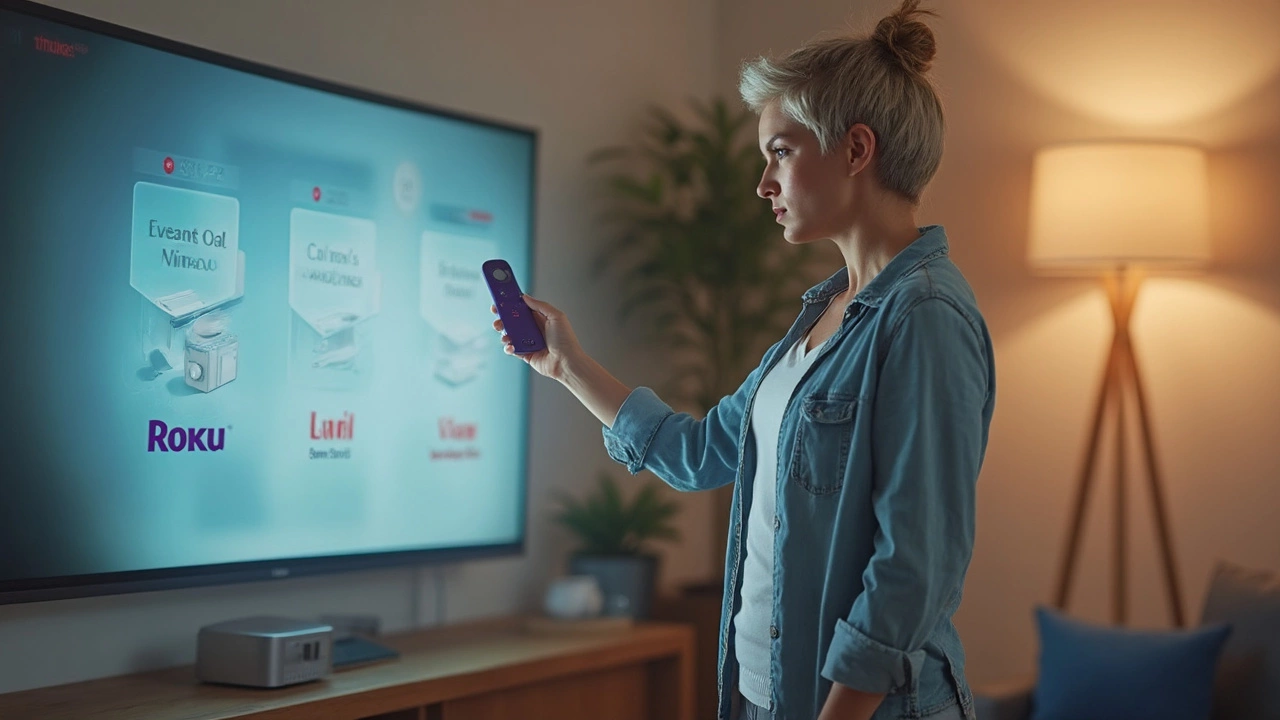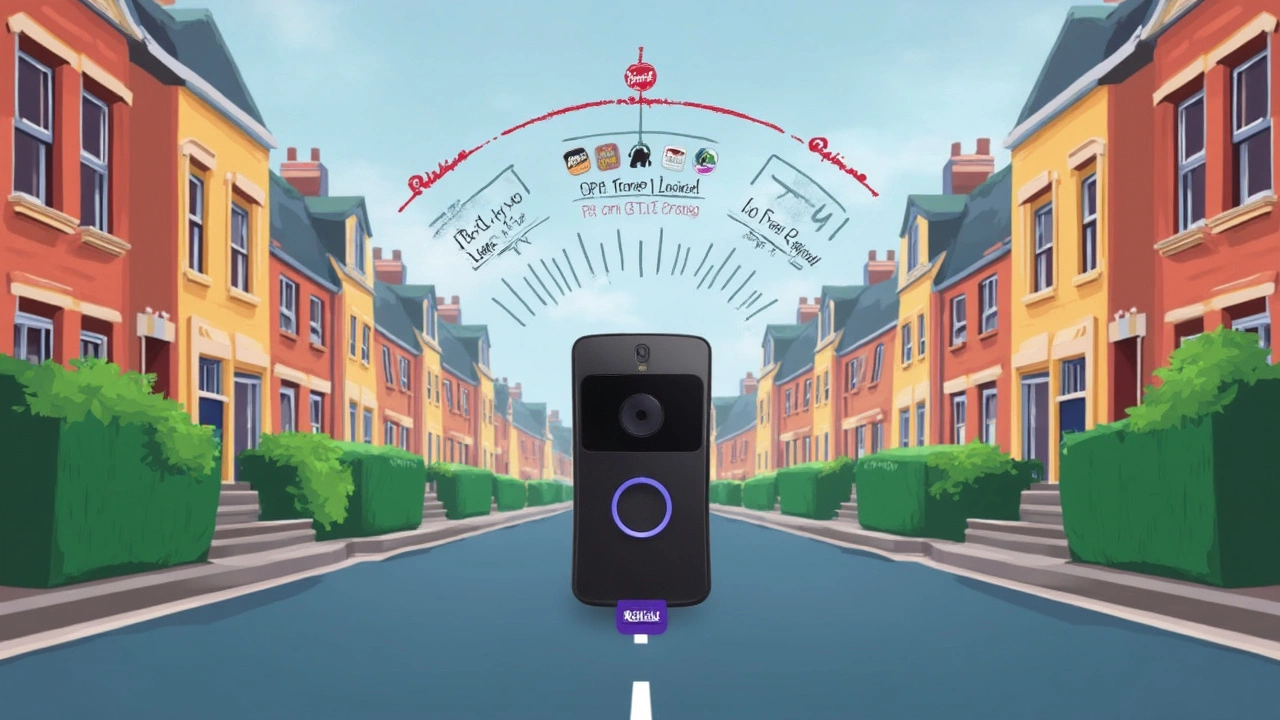You buy a doorbell, stick it up, and start feeling a little safer — that’s what most of us expect. But lately, it seems every smart home gadget likes to surprise us with monthly fees. It’s the old bait-and-switch: get your foot in the door with affordable hardware, then drip-feed the charges for basic stuff. And here comes Roku, that streaming brand you probably already trust, tossing their own doorbell into the ring. So, does Roku doorbell have a monthly fee, or can you dodge those never-ending charges? Here’s what really happens after you bring one home.
Understanding Roku Doorbell’s Pricing Model
The biggest question people have with smart doorbells is plain and simple: Do I have to pay every month, or is everything included once I get the doorbell set up? Roku didn’t invent the subscription thing. Amazon’s Ring, Google Nest, and even Arlo cameras all love their monthly plans. Roku, not wanting to be left out, set up its own system to make things look flexible. But what’s the deal?
When you buy a Roku doorbell, you aren’t forced to sign up for a subscription. That means if you’re happy with basic live view and notifications while you’re at home, you can just buy the hardware and stop right there — no pressure. Want recorded videos, motion history, or smart alerts? That’s where they nudge you to pay up.
As of early 2025, Roku’s base plan is called Roku Smart Home Subscription. It covers all their cameras and doorbells. The fee is $3.99 per device, per month, or you save a bit by paying $39.99 per year. Got a house full of cameras? There’s a flat $9.99 per month unlimited devices plan. The price puts Roku right up against competitors — not the cheapest, not the most expensive, but kind of in the middle.
Let’s break down what you get for free versus what goes behind that monthly paywall:
| Feature | Free (No Subscription) | With Subscription |
|---|---|---|
| Live Video | Yes | Yes |
| Motion Alerts | Yes | Yes |
| Event History/Cloud Recording | No | Yes (14 days) |
| Smart Notifications (Person, Package, Pet Detection) | No | Yes |
| Download/Share Videos | No | Yes |
So, the core answer: you don’t need to pay a monthly fee if you just want live video and basic motion alerts. If you want to keep recordings for later — like to check who was at the door last week, or show your neighbor proof their dog is the real porch pirate — you need the subscription. Roku keeps it clear, but it’s not all-inclusive by default.
Comparing Roku Doorbell to Other Brands
It’s one thing to know how Roku handles fees, but it’s way more useful to see how it stacks up against the big names that have been doing the smart doorbell thing longer. Nobody wants to switch systems unless they’re getting a better deal, right?
Here’s a side-by-side look at how Roku matches up to the other top contenders, as of mid-2025:
| Brand | Monthly Fee (Single Device) | Monthly Unlimited Plan | Trial/Free Tier |
|---|---|---|---|
| Roku | $3.99 | $9.99 | Live only |
| Ring | $4.99 | $10.00 | Live only |
| Google Nest | $8.00 | n/a | 3 hours events |
| Arlo | $4.99 | $12.99 | Live only |
You’ll notice everyone lets you see video live and gives you basic alerts for free — but the cool stuff like saving footage, finding events by searching “person” or “package,” and sharing clips with someone else almost always costs. Roku tucks its prices just under the competition (especially Ring and Arlo), though if you’re already in another ecosystem, moving everything to Roku just to save a few bucks might not be worth the hassle.
As for the storage, Roku saves recordings for 14 days before they vanish off the cloud. Ring and Arlo give you the same—or sometimes less—unless you splash for pricier plans. If you miss an important package delivery or need to double-check who knocked when you weren’t home, those two weeks is the window you get with Roku.
People often ask: is there a way to get more without a subscription? Unless you rig up some fancy home server and hacky recording method (which Roku’s consumer cameras usually block), you’re kind of stuck. That’s life in smart home world. As one reviewer at The Verge put it,
“You’re not just buying the device; you’re buying into a monthly relationship. Hardware is the date, subscription is the wedding.”So don’t expect totally ‘forever free’ smart cameras no matter what brand you pick.

Is the Roku Doorbell Fee Worth It? Features You Get With and Without Paying
If you’re like me, you hate paying for something that should just work. So, does spending that $3.99 a month actually mean you get features worth caring about?
- Cloud recording: Without a subscription, the Roku doorbell only shows you what’s happening right now. If you miss a notification, that moment’s gone. Pay the monthly fee, and the camera saves every motion or ring event for two weeks. Super useful if you travel or can’t check every time your phone pings.
- Intelligent alerts: Advanced notifications matter a lot if you’re tired of every passing car or fluttering leaf setting off your phone. Subscription gives Roku the power to tell people apart from packages or pets. That means fewer false alarms on a windy day or nights when raccoons make guest appearances.
- Sharing evidence: Have a weird moment caught on camera? Want to send video proof to neighbors or your landlord? Recorded clips are download-and-share only with a subscription.
If you’re just looking to see who’s knocking while you’re upstairs, or want to shout “leave the package!” through two-way talk, you’ll be fine skipping the plan. But if you want serious home security, evidence in case something sketchy happens, or smarter features, fork over the four bucks.
Maeve and I set up a Roku doorbell last fall after a porch theft spree in our neighborhood. The peace of mind came from knowing we’d have footage even if we missed an alert and the smart alerts quickly quieted down all the squirrels that used to ping our phones. For us, it was worth the $39 for a year, just to not miss anything that matters. If you hate recurring monthly charges, Roku at least gives you the yearly discount option, which feels slightly less annoying.
Bonus tip: Roku tends to offer trial months for first-timers, usually a 14- or 30-day free sample of the subscription. So set a reminder and see if you actually use those extras before you commit to the full year. Plenty of people find they check recordings exactly twice, cancel, and stick with the free view afterwards.
One thing to note: there’s no way to record video directly to a memory card from the Roku doorbell. Some folks try to avoid cloud fees with SD cards, but in this case, that’s not an option. If keeping local videos is a must, look elsewhere.
Privacy and Security: What Happens to Your Data?
We trust these gadgets with a ton of personal info, but do you know where your videos end up? Roku says all event footage is encrypted in transit and while stored on their cloud servers. They don’t sell your door footage to advertisers or third parties.
If you have a subscription, every event — motion, ring, sound — is uploaded straight to Roku’s cloud. You can access and delete clips anytime from the Roku Smart Home app. Cancel your plan or delete your account, and everything on their servers gets wiped. Without a subscription, nothing gets uploaded to the cloud, so you’re not leaving video trails of your life with Roku for free tier usage.
Your doorbell streams through your Wi-Fi and local network, and Roku supports two-factor authentication if you want to keep things locked down. Still, any internet-connected camera comes with a risk. Pick a strong password and don’t reuse ones from other websites. Reports of hacked smart cameras almost always come down to reused or weak passwords, not shady company behavior.
The privacy focus isn’t just marketing. After a few industry scandals about camera brands leaking footage, Roku’s platform aims to make security boring — as in, you never have to think about it. It doesn’t win press awards, but you’ll appreciate not making headlines for the wrong reason.
A tip: enable “end-to-end encryption” in the Roku Smart Home mobile app if you want truly private streams — your live video can’t be watched by anyone except you, not even Roku staff.

Should You Choose Roku Doorbell? Practical Tips and Advice
This isn’t just about price tags, it’s about how well Roku fits into your smart home world. Here’s a checklist for deciding if the Roku doorbell (and its subscription) makes sense for you:
- Already use Roku TVs or streaming sticks? You’ll love how all the notifications and camera views pop up on your TV — way less fumbling for a phone.
- Want everything to run off one app? Roku bundles all their Smart Home gear under one simple app. Plays nice with Google Assistant and Alexa, but not Apple HomeKit.
- Have spotty Wi-Fi? Position your router close to the doorbell or consider a Wi-Fi extender. The doorbell needs a solid connection to stream or record events smoothly.
- No patience for setup headaches? Roku’s hardware design keeps things about as easy as it gets. If you can operate a screwdriver and pair a Bluetooth speaker, you’ll be fine.
- Hate paying forever but want short-term coverage? Try the monthly sub for a few months during holidays or travel, then turn it off when you don’t need it.
If you’re set on local-only recording or need a hardwired-only device, Roku probably isn’t your thing. But if you want “good enough” protection with minimum tinkering, its pricing actually feels reasonable compared to most of the market. Just don’t forget to factor that small-but-steady monthly fee into your decision, especially if you plan to put cameras all over.
Here’s the reality: the days of “buy once, use forever” with smart technology are kind of over. But with Roku’s doorbell you can start free, upgrade only if you actually want the premium stuff, and back out if subscriptions bug you. That’s not so bad.

